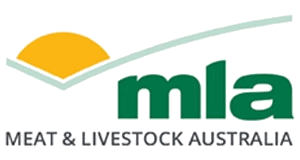Is the Australian lamb market becoming more volatile?
Key points:
- Lamb prices are more volatile as market players become more reactive to market conditions.
- Slaughter can help indicate the overall supply of the market.
- Relying on the lamb production life cycle to predict prices without considering the overall market can lead to unfavourable outcomes.
Many will be asking themselves what has happened to the lamb market in recent years, with the uncertainty of the market having resulted in unexpected price changes.
Prices are at the highest they have been in last two years, following good weather conditions since the El Niño was announced in 2023. There has been a rebound in prices in the previous couple of months. With lambing season beginning, prices typically rise during this time.
Historically in 2018–2019 and 2021, a clear trend appeared which reflected the seasonality where prices start to increase at the start of lambing season, reaching its peak at the beginning of spring. This trend completely breaks down in the following years due to reasons such as unpredictable world events and foot-and-mouth disease (FMD).
In 2020, prices peaked in March and continued to ease into August where prices were at their lowest. This trend is unusual but can be explained the COVID-19 outbreak.19. During this period, demand eased from processors which were unable to process more animals. This diverges from the standard yearly seasonal trend. Notably, there are a multitude of factors that influence price, but overall supply will have a larger impact on the operating environment. Lamb slaughter typically begins to dip from lambing season up until spring flush. In 2020, slaughter hovered around 300,000 to 350,000 head. This is well below the figures of 2018–19 where drought led to increased destocking. During 2020, the dynamic flipped into a rebuild where slaughter eased and there was increased attention on restocking.
During 2022 there continued to be a buck in the trend. Prices reached their peak in November at 833¢/kg carcase weight (cwt), with a dip in prices in July to 667¢/kg cwt. July is when prices would typically rise in line with the beginning of lambing season. Although the prices bucked the seasonal trend, the combination of a FMD scare, a strong season and decent processor capacity meant there was minimal price volatility. Slaughter figures were consistently strong throughout 2022 without seasonal dips. This points to increased supply in the market after a strong rebuild in 2021.
